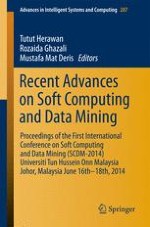This book constitutes the refereed proceedings of the First International Conference on Soft Computing and Data Mining, SCDM 2014, held in Universiti Tun Hussein Onn Malaysia, in June 16th-18th, 2014. The 65 revised full papers presented in this book were carefully reviewed and selected from 145 submissions, and organized into two main topical sections; Data Mining and Soft Computing. The goal of this book is to provide both theoretical concepts and, especially, practical techniques on these exciting fields of soft computing and data mining, ready to be applied in real-world applications. The exchanges of views pertaining future research directions to be taken in this field and the resultant dissemination of the latest research findings makes this work of immense value to all those having an interest in the topics covered.
